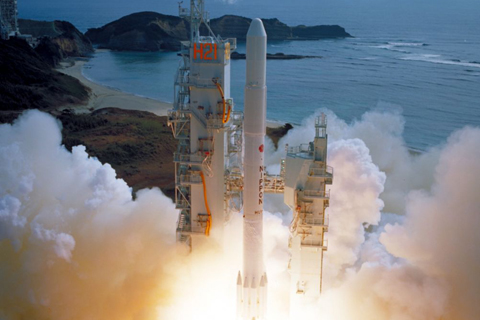About H-I Launch Vehicle
 |
The H-I, which drew on the results from the development of the N-I and N-II launch vehicles, is a three-stage rocket created for responding to Japan's satellite launching needs of the late 1980's. |
|---|
Major characteristics
| Overall length | 40.30m |
|---|---|
| Diameter | 2.49m (Second stage) |
| Total weight | 139.3t (payload not included) |
| Guidance system | Inertial guidance system |
Launch Records
| Flight No. | Launch Date | Peyload |
|---|---|---|
| H15F | 8/13/1986 | Experimental Geodetic Satellite "Ajisai"(EGS) Magnetic Bearing Flywheel Experimental System "JINDAI"(MABES) Japan Amateur Satellite-1 "FUJI-1"(JAS-1) |
| H17F | 8/27/1987 | Engineering Test Satellite V "KIKU-5"(ETS-V) |
| H18F | 2/19/1988 | Communication Satellite-3a "Sakura-3a"(CS3a) |
| H19F | 9/16/1988 | Communication Satellite-3a "Sakura-3a"(CS3a) |
| H20F | 9/6/1989 | Geostationary Meteorological Satellite-4 "Himawari-4"(GMS-4) |
| H21F | 2/7/1990 | Marine Observation Satellite-1b "Momo-1b"(MOS-1b) Deployable Boom and Umprella Test "ORIZURU"(DEBUT) Japan Amateur Satellite-1b "FUJI-2"(JAS-1b) |
| H22F | 8/28/1990 | Broadcasting Satellite-3a "Yuri-3a"(BS3a) |
| H23F | 8/25/1991 | Broadcasting Satellite-3b "Yuri-3b"(BS3b) |
| H24F | 2/11/1992 | Japanese Earth Resources Satellite-1 "FUYO-1"(JERS-1) |